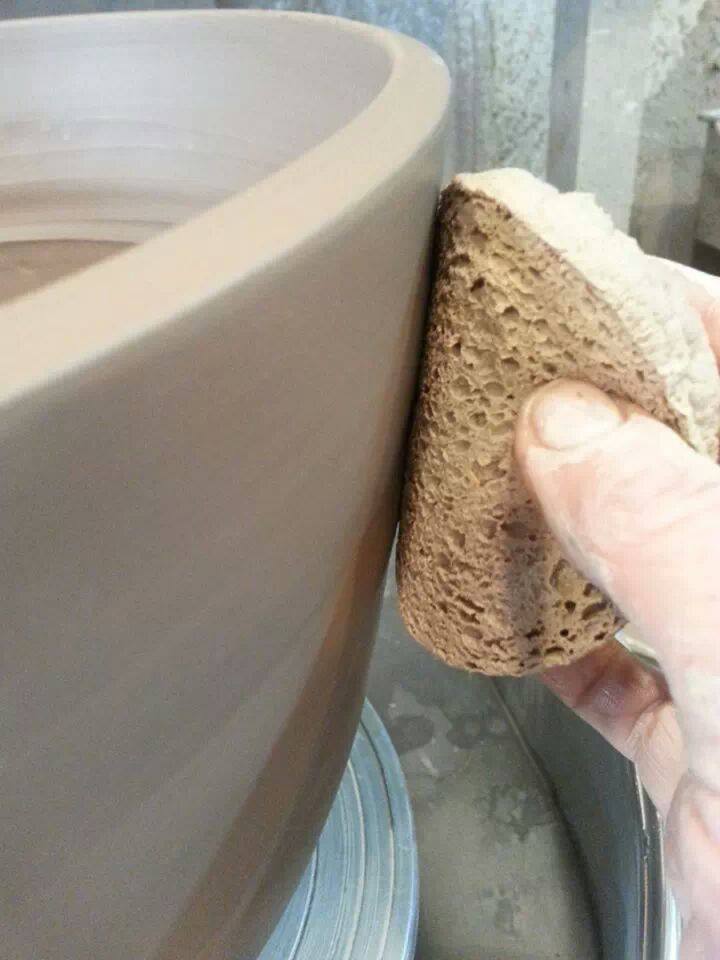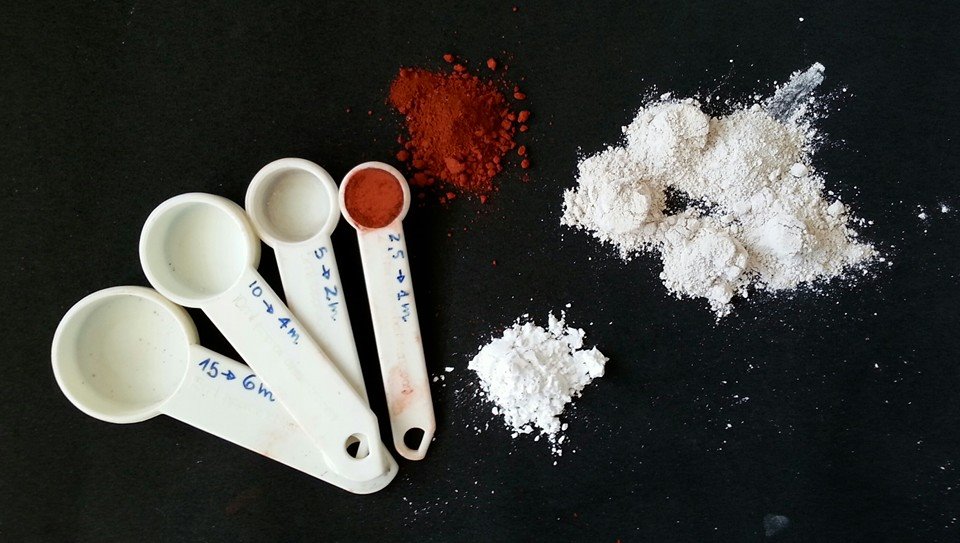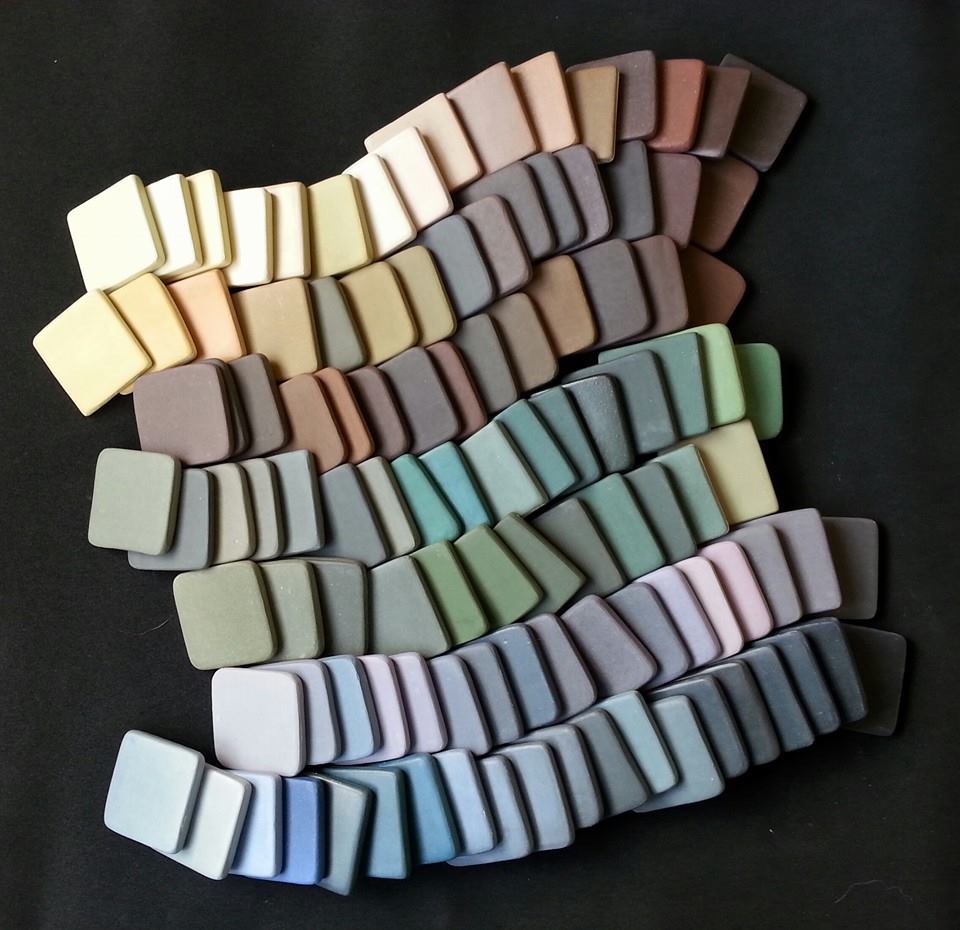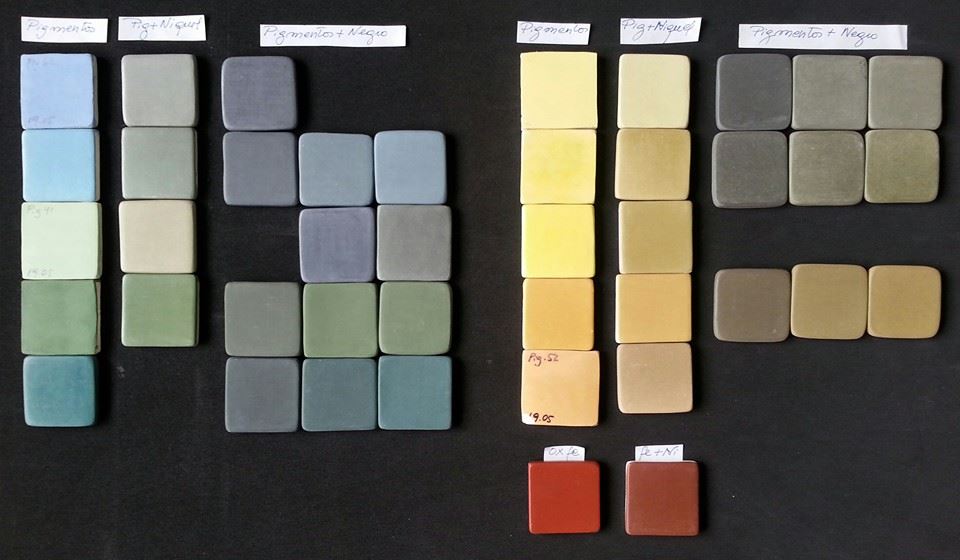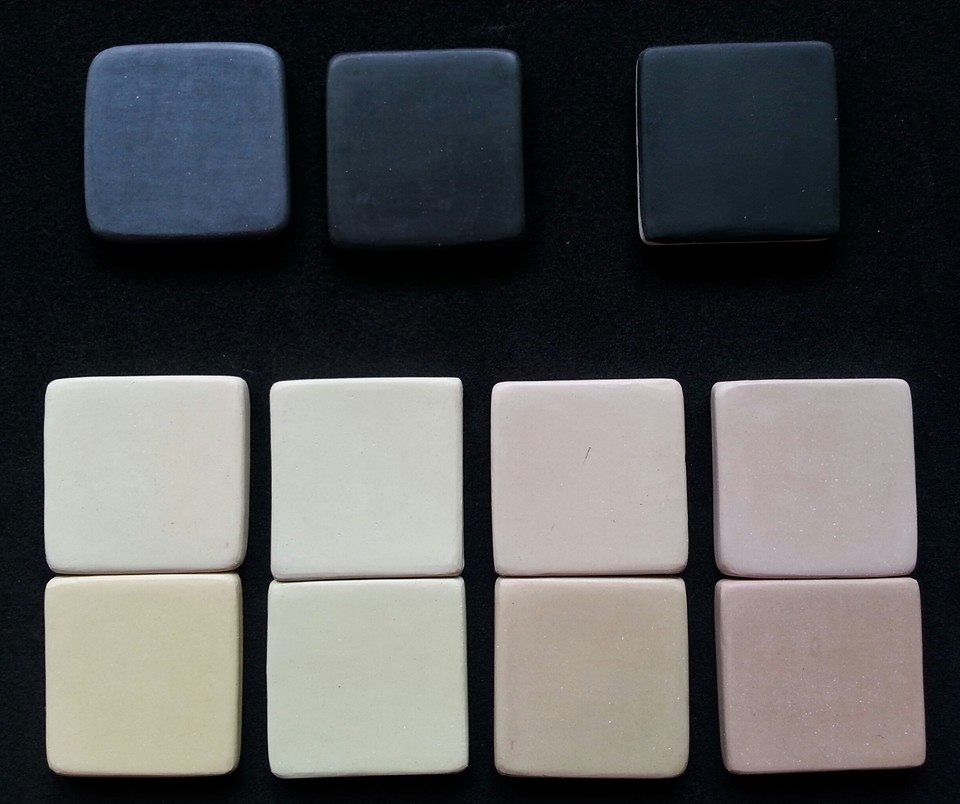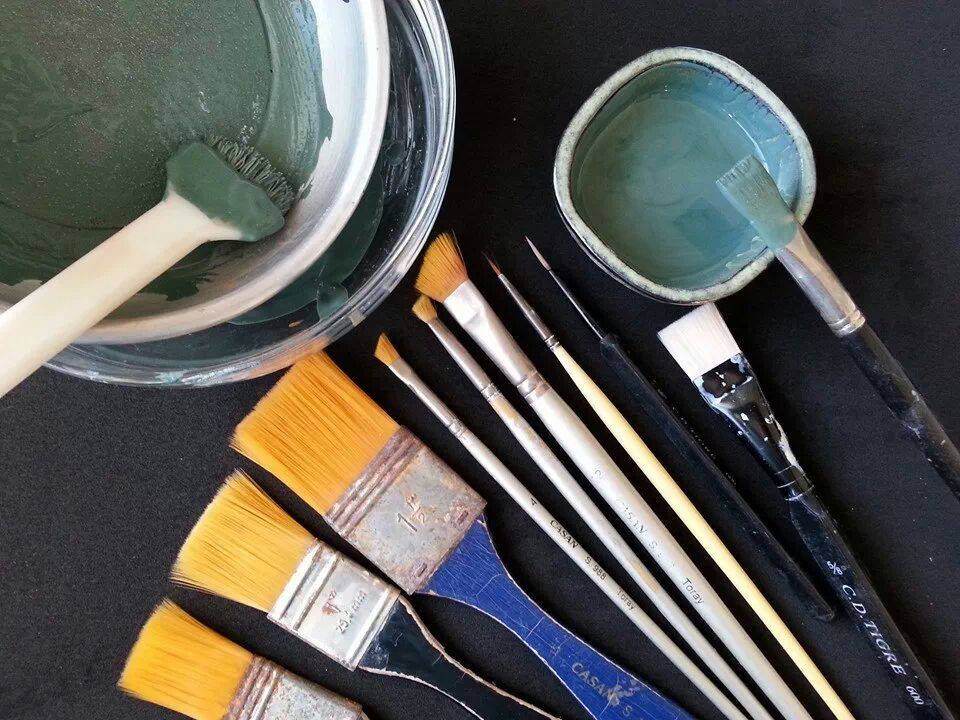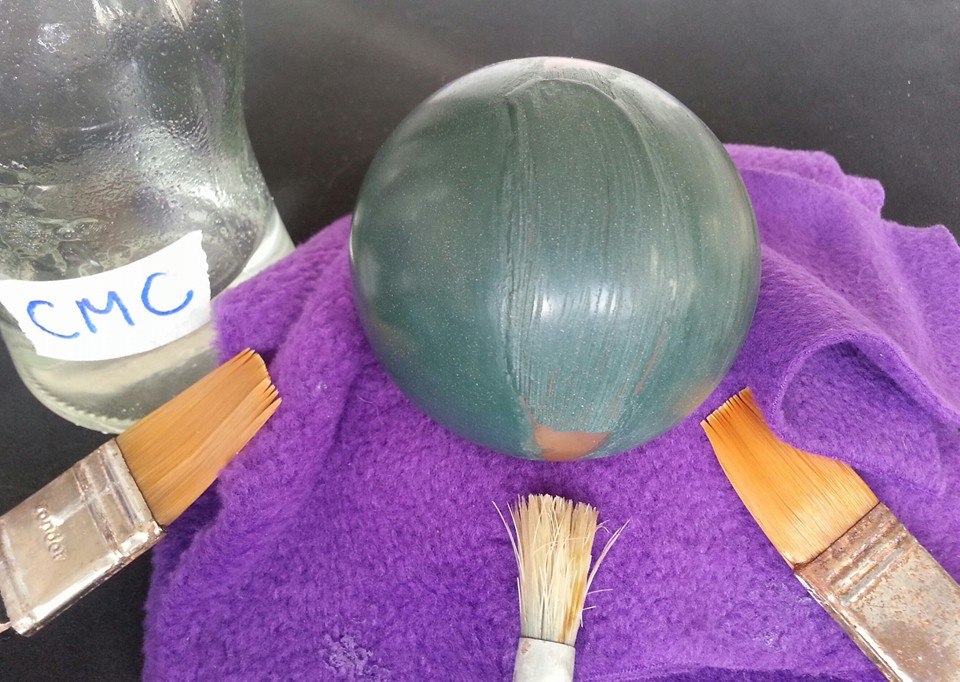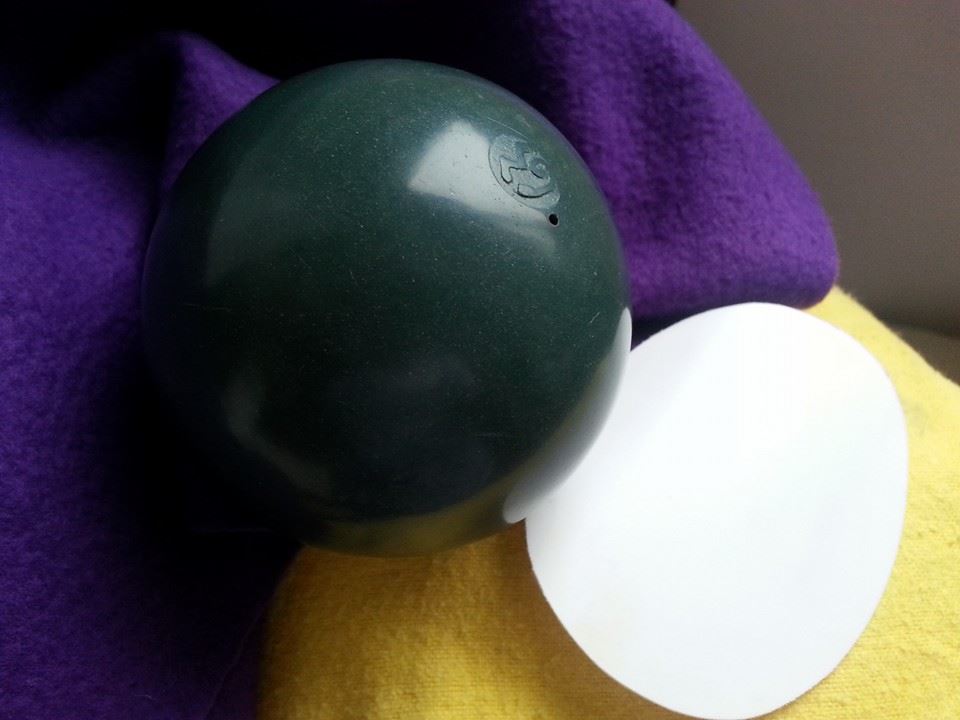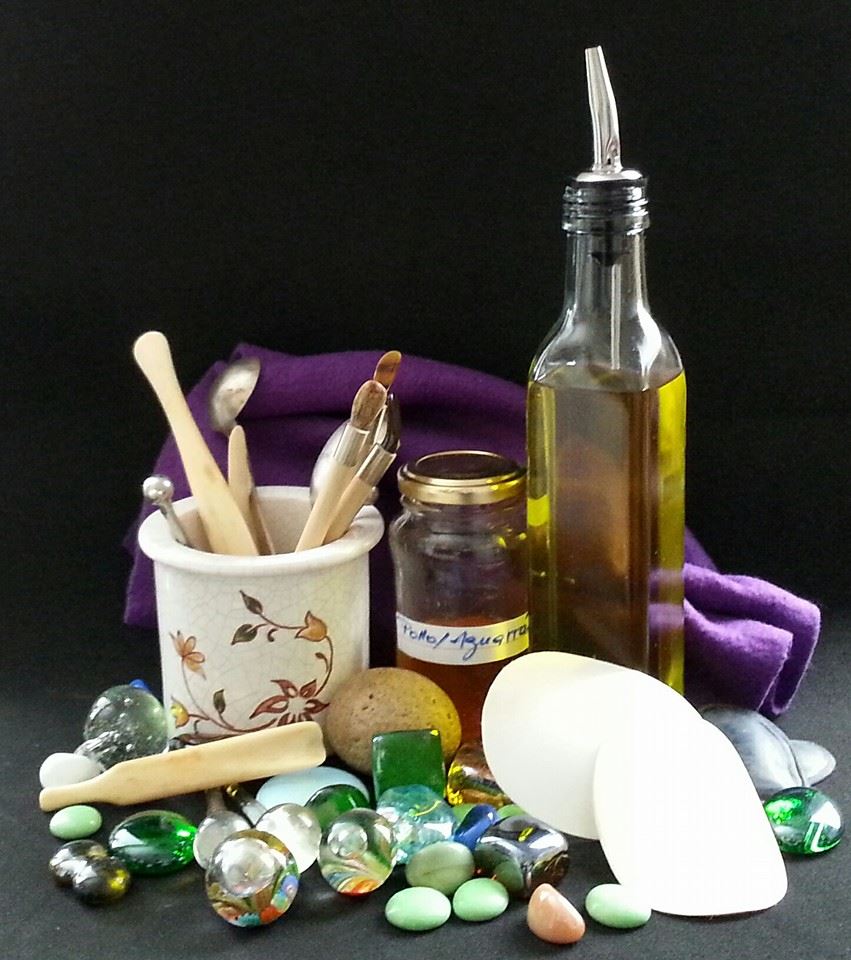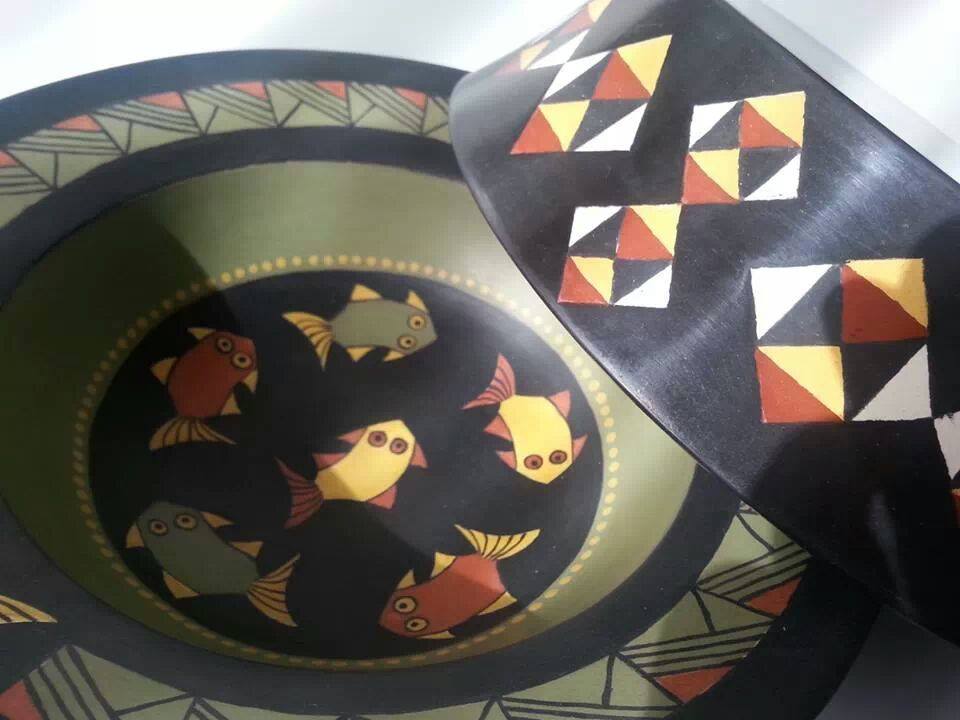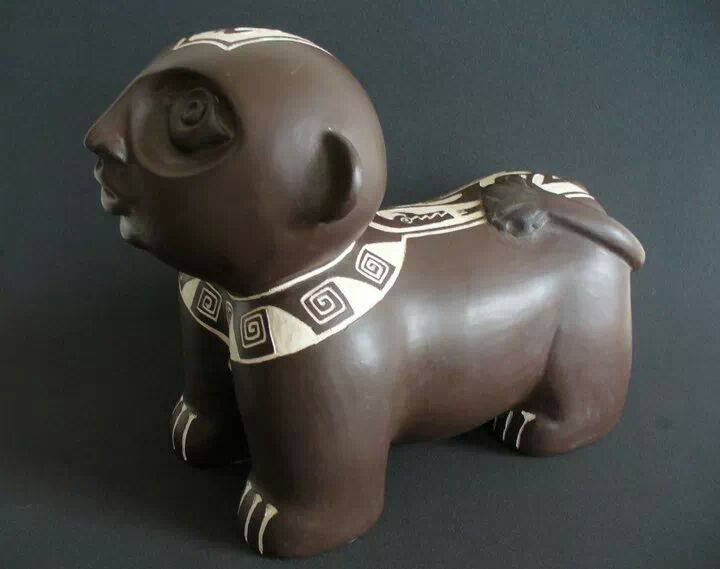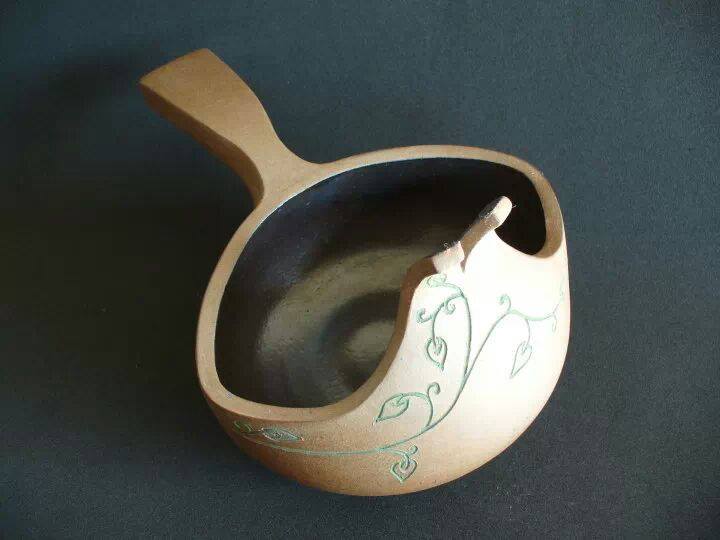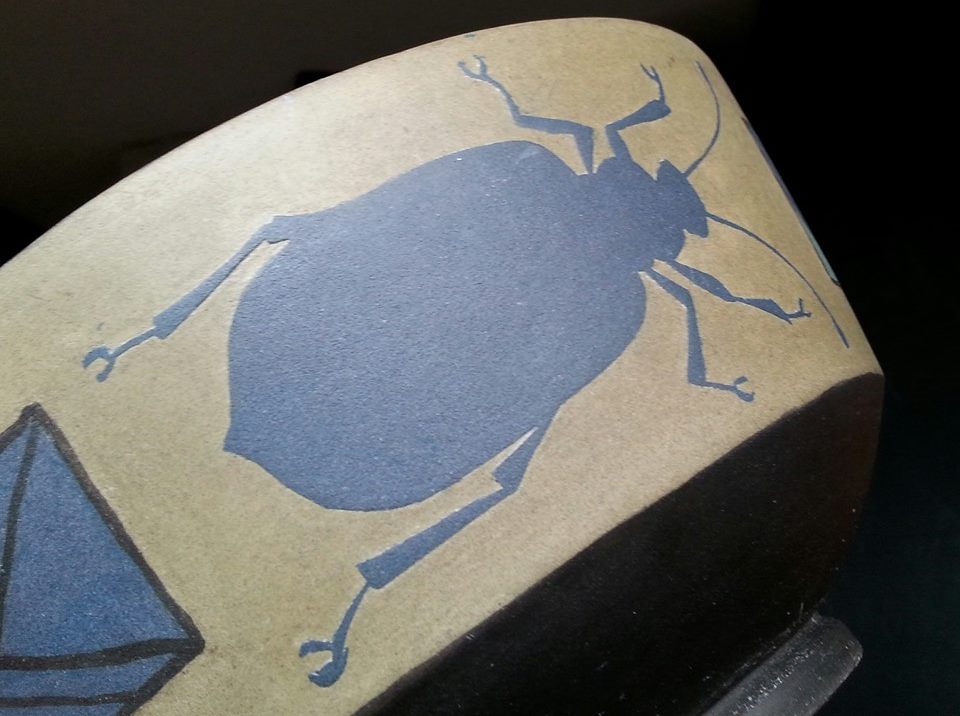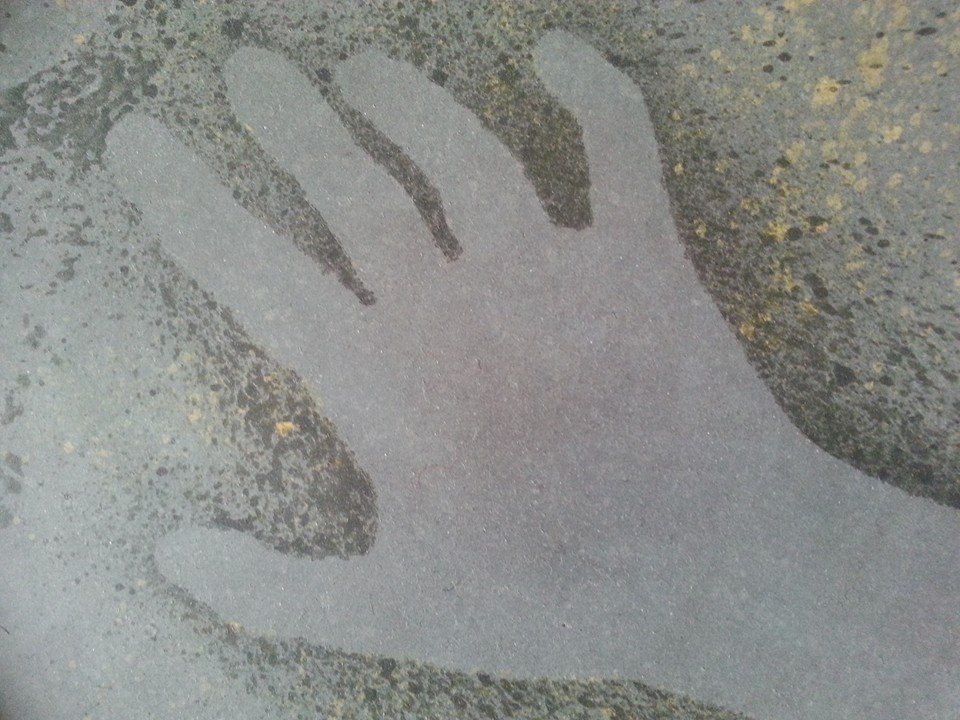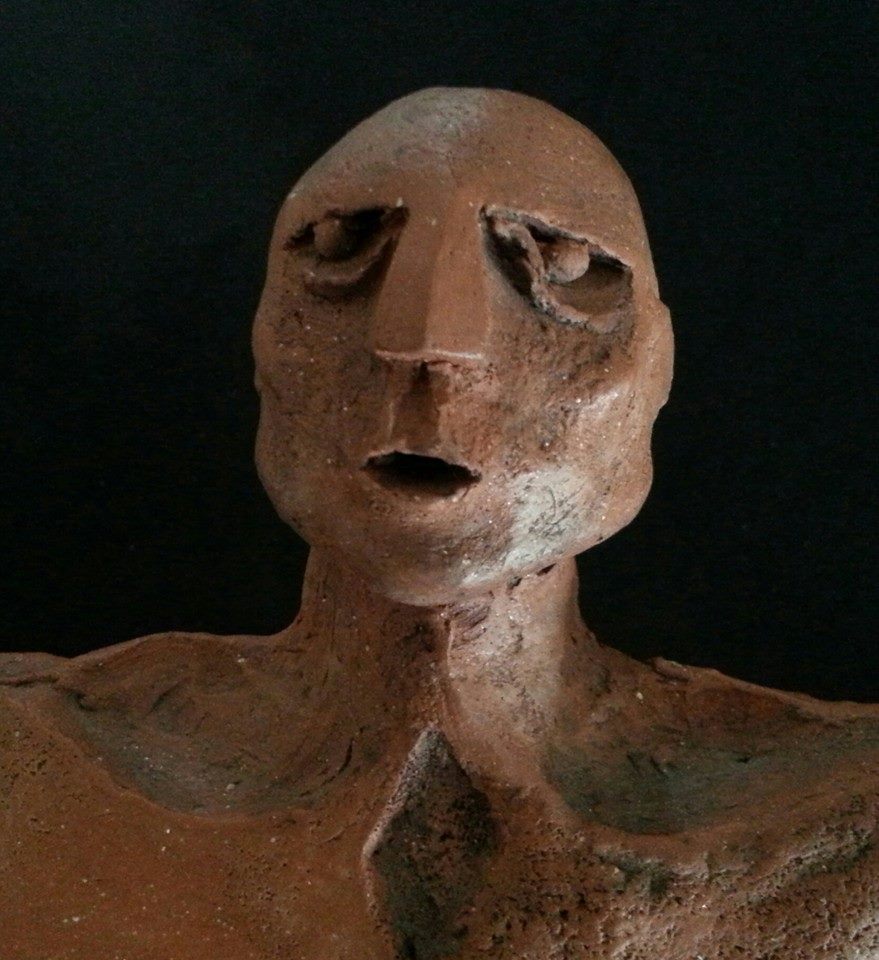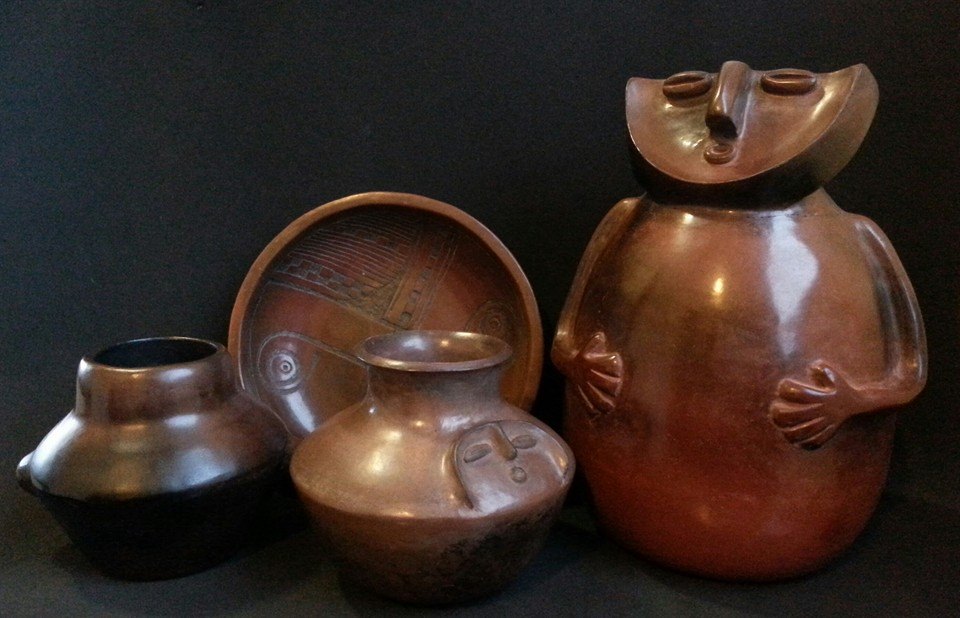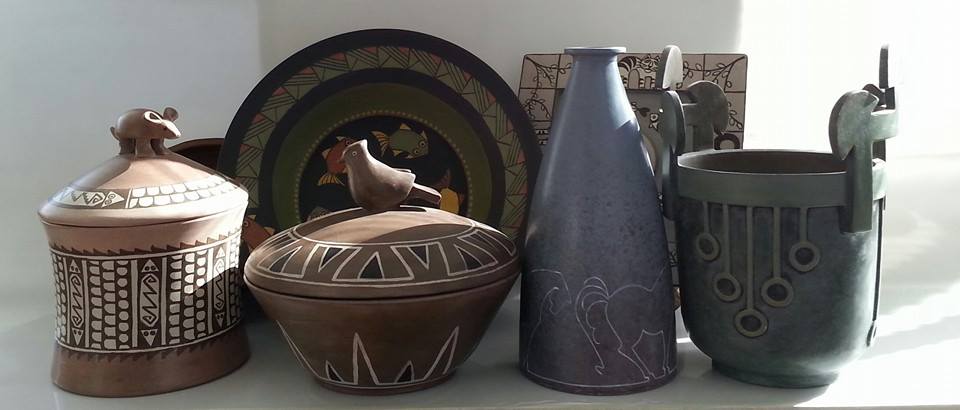La pieza (The Piece)
para que el engobe se luzca, la pieza debe estar prolijamente terminada y se deben quitar las sales que casi siempre contiene la arcilla.
El sistema que segurito funciona es muy sencillo, sólo es necesario tiempo y paciencia:
- esperar a consistencia “un poquito más seco que cuero, casi hueso” y poner a girar la pieza sobre una torneta o torno
- “lavarla” suavemente ( como una caricia) con una esponja embebida en agua, empezando siempre por la boca para evitar roturas. Enjuagar la esponja, estrujarla para que quede húmeda y repasar.
- repetir el proceso de “lavado” varias veces ( mínimo 5 o 6, pero lo ideal es “muuuuchas”), enjuagando siempre la esponja bajo un chorro de agua.
- entre lavado y lavado, dejar orear la pieza.
- en zonas de agua salitrosa, usar agua desmineralizada o destilada.
Mi esponja preferida para este tipo de proceso es la de la foto, que se encuentra en farmacias y perfumerías.
For the slipware to look, the piece must be neatly finished and the salts that almost always contain the clay must be removed.
The system that champion works is very simple, only time and patience is needed:
- wait for consistency “a little drier than leather, almost bone” and turn the piece over a torneta or lathe
- “Wash” Gently (like a caress) with a sponge embedded in water, starting always by mouth to avoid breakage. Rinse The Sponge, rinse it out to get wet and go over.
- repeat the process of " washing " several times (Minimum 5 OR 6, but ideally is " many "), always rinsing the sponge under a jet of water.
- between wash and wash, leave the room.
- in water areas, use or distilled water.
My preferred sponge for this type of process is that of the photo, which is found in pharmacies and perfumeries.
La receta básica para engobe de pigmentos (The basic recipe for pigment slipware)
Por volumen. Se use la unidad de volumen que se use, siempre bien “comprimida” y estrictamente al ras, para luego poder repetir exactamente el mismo color.
~ Arcilla en polvo (la misma de la pieza -secar y reducir a polvo la misma “pasta” con la cual se la elaboró): 5 unidades de volumen
~ Esmalte transparente para aproximadamente la misma temperatura a la cual se va a hornear: 1 unidad de volumen
~ Pigmento: 2 unidades de volumen
Esta receta es para obtener un color bien saturado, para ser usado bruñido. Ir bajando la cantidad de pigmento para obtener una paleta menos saturada.
Si se le va a agregar luego un esmalte transparente por encima, tomar en cuenta que el color cambiará. Será muuuuuucho más vivo y fuerte.
By Volume. Use the unit of volume used, always “compressed” and strictly al ras, then repeat the exact same color.
- Clay Powder (the same of the piece-Dry, and reduced to dust the same “Pasta” with which the developed): 5 units of volume
- Transparent Enamel for approximately the same temperature at which is going to bake: 1 unit of volume
- Pigment: 2 units of volume
This recipe is to get a color well saturated, burnished for cricket. Go down the amount of pigment palette to get a less saturated.
If you’re gonna add then a transparent glaze over, taking into account that the color will change. It will be much more alive and strong.
Paleta de colores (Color Palette)
Con la receta básica se puede conseguir una increíble e interminable paleta de colores, tanto bajando la proporción de pigmento como la de óxido.
También colores “bajos” y delicados con el agregado de ox de Níquel, o diferentes porcentajes de otros pigmentos y óxidos
With the basic recipe you can get an amazing and endless palette of colors, both lowering the proportion of pigment and rust.
Also “low” and delicate colours with the aggregate of ox of nickel, or different percentages of other pigments and oxides
Engobes partiendo de óxidos - por volumen (Engobes and oxide - based on volume)
(Tp = esmalte transparente; arcilla: la misma pasta usada para elaborar la pieza, seca y en polvo)
Los óxidos brindan una amplísima y variada paleta de colores, tanto modificando la cantidad de óxido como combinándolos entre sí. Las posibilidades son infinitas.
Punto a favor: el costo es mucho más bajo que usando pigmentos y con pocas materias primas se consigue una paleta amplísima.
Punto en contra: el proceso de encontrar toda la gama lleva más tiempo y dedicación. A veces un engobe marrón y otro rojo en crudo tienen el mismo colorido, haciendo más complicada su aplicación en una misma pieza.
- Columna n°1: Óx de Cobre y Carbonato de Calcio
Muestras n° 1, 2 y 3: Arcilla 5 + Tp 1,5 + Carb Ca desde 2, 5 a 0,5 + Cu desde 0,5 a 0,1. La muestra n° 1 vitrifico en un hermoso esmalte satinado, verde oscuro. - Columna n°2: Ox de cobre
Muestras n°1 al 5: Arcilla 5 + Tp 1 + Cu desde 2 (metalizado) hasta 0,1 (marron verdoso) - Columna n°3: Oxido de Niquel
muestras n°1, 2 y 3: Arcilla 5 + Tp 1 + Ni desde 2 a 0,5 (verde musgo) - Columna n°4: Oxido de cromo
muestras n°1 y 2: Arcilla 5 + Tp1 + Cr 1 y 0,25 - Columna n° 5: Ox de cobalto
muestras n°1 y 2: Arcilla 5 + Tp 1 + Co 0,25 y 0,06 - Columna n° 6: Oxido de Hierro
muestras n°1 al 4: Arcilla 5 + Tp 1 + Fe desde 2 hasta 0,25 - Column n°7: Oxido de Manganeso
muestras n°1 al 3: Arcilla 5 + Tp 1 + Mn 2; 1; y 0,25
(TP = Transparent Enamel; Clay: the same cloth used to develop the piece, dried and powdered)
Oxides provide a wide and varied range of colours, both by changing the amount of rust like a combination of them. The possibilities are endless.
Bonus Point: the cost is much lower than using pigments and with few raw gets a huge palette.
Point against: the process of finding the whole range takes more time and dedication. Sometimes a slipware brown and another red raw have the same coloring, doing more complicated its application in one piece.
- Column No. 1: ox of copper and calcium carbonate
Sample No. 1, 2 AND 3: Clay 5 + TP 1,5 + carb ca since 2, 5 to 0,5 + cu from 0,5 to 0,1. the sample No 1 Vitrifico on a beautiful glossy enamel, dark green.- COLUMN NO 2: Copper ox
No 1 TO SAMPLE 5: Clay 5 + TP 1 + CU FROM 2 (Metallic) to 0,1 (Greenish-Brown)- Column No. 3 Nickel: Rust
Sample No. 1, 2 AND 3: 5 + Clay + TP 1 or from 2 to 0,5 (Green Moss)- COLUMN NO 4: Chromium oxide
Samples No 1 AND 2: Tp1 5 + Clay + CR 1 and 0,25- COLUMN NO 5: Cobalt ox
Samples No 1 AND 2: Clay 5 + TP 1 + co 0,25 and 0,06- Column No. 6: Iron oxide
No 1 TO SAMPLE 4: Clay 5 + TP 1 + FE FROM 2 to 0,25- COLUMN NO 7: manganese oxide
No 1 TO SAMPLE 3: Clay 5 + TP 1 + MN 2; 1; and 0,25
Variar la paleta (How to vary the palette)
Tan solo un ejemplo de cómo variar la paleta, agregando óxidos o pigmentos en diferentes porcentajes.
Engobes y Niquel, Engobes y Pigmento Negro
Columna n°1: engobes de pigmento de acuerdo a la “receta básica”
Columna n°2: los mismos engobes de la columna n°1 con ox de Ni
Columna n°3: los mismos engobes de la columna n°1 con pigmento negro en diferentes porcentajes
Just an example of how to vary the palette, adding oxides or pigments to different percentages.
Engobes And Nickel, engobes and black pigment
Column No 1: Pigment Engobes according to the “basic recipe”
Column No 2: the same engobes of Column 1 with ox of ni
Column No 3: the same engobes of column no 1 with black pigment in different percentages
Engobes negros y cremas (Black engobes and creams)
Un buen negro no se consigue simplemente con pigmento negro: queda agrisado, como las muestras n° 1 y 2.
La n°3 es negra… negra. ( arcilla 10 + Tp 1,5 + Cu 1,5 + Co 0,5 + Pig Negro 0,5 + fe 0,5 + Mn 0,5). No seguí probando, pero creo que a esta “fórmula” le vendría bien bajarle el Cu, eliminar el pigmento negro y subir el Fe…
Los colores “crema”, bien claritos, son, básicamente, pequeñísimas cantidades de pigmento amarillo con pigmento negro y/o ox de Co y/o ox fe.
A good black is not simply achieved with black pigment: it remains agrisado, like samples NOS 1 and 2.
Number 3 is black… Black. (Clay 10 + TP 1,5 + CU 1,5 + co 0,5 + Pig Black 0,5 + FE 0,5 + MN 0,5). I didn’t keep trying, but I think this “Formula” LE It would be nice to lower the cu, eliminate the black pigment and raise the faith…
The “Cream” Colors, well light, are basically tiny amounts of yellow pigment with black pigment and / or ox of co and / or ox faith.
Preparación del engobe (Preparation of englobe)
- Medir los elementos y colocarlos en un recipiente.
- Agregar agua hasta apenas cubrir. Esperar unos 15 minutos hasta que el agua “penetre”. Mezclar muy bien con pincel.
- Tamizar 2 o 3 veces. Yo suelo usar primero un tamiz malla 50, luego otro malla 80 y por último uno malla 100.
- Agregar más agua de a poco hasta conseguir una consistencia de “crema chirla”. Tanto para tamizar como para mezclar el engobe, usar pinceles “duros”. Para tamizar es preferible uno chato y corto.
- Para aplicar el engobe, los pinceles tienen que ser SUAVES, sí o sí. Con una pinceleta y un pincel fino de punta alcanza pero son útiles: pinceletas, pincel chato de borde recto, pincel chato de borde chanfleado, pinceles finos y puntiagudos para líneas.
- measuring the elements and placing them in a container.
- add water to barely cover. Wait about 15 minutes until the water “penetrates”. mix very well with brush.
- Sift 2 OR 3 times. I usually use a mesh 50 Sieve first, then another mesh 80 and finally one mesh 100.
- add more water to a close to a " cream ". both to sift and to mix the slipware, use " hard " Brushes, to sift is preferable to a flat and short.
- to apply the slipware, brushes have to be soft, yes or yes. With a pinceleta and a fine-edged brush, but are useful: Pinceletas, flat-edged brush, flat-edged brush, and sharp brushes for lines.
Engobe diluído con Cmc y agua (Diluting englobe with CMC and water)
A la izquierda, engobe diluído con Cmc y agua (50% agua + 50% solución de Cmc, aproximadamente, de acuerdo a lo que se desee) , consistencia crema chirla, aplicado en 3 capas con pincel de cerda suave.
En el centro, engobe diluído con agua, consistencia cremosa, aplicado con pincel de cerda dura.
A la derecha, engobe diluído con agua, consistencia cremosa, aplicado con pincel de cerda suave.
**Nota: Solución de Cmc = 125 ml de agua + 2,5ml de Cmc
***Nota: la cantidad de solución de Cmc no es inamovible, y ni siquiera las cantidades para preparar la solución. Cada cual lo prepara aproximadamente a su gusto. Lo importante es la fluidez que uno quiera obtener en la pincelada pero, sobretodo, con lo que uno se siente cómodo. O del recurso decorativo que se desee obtener.
To the left, diluted with CMC and water (50 % water + 50 % solution, approximately, according to what is desired), cream consistency, applied in 3 layers With a soft sow brush.
In The Centre, slipware diluted with water, creamy consistency, applied with a hard sow brush.
To the right, dilute it with water, creamy consistency, applied with a soft sow brush.
** NOTE: Solution = 125 ml water + 2,5 ml of CMC
*** NOTE: the amount of solution solution is not immovable, and not even the quantities to prepare the solution. Each of which prepares him approximately to his taste. The important thing is the fluidity that you want to get in the stroke but, above all, with what you feel comfortable. Or the decorative resource you want to obtain.
Resultados luego del bruñido (Results after burnishing)
- A la izquierda (cerda suave + Cmc y agua + consistencia chirla en varias capas): brillo uniforme tipo espejo.
- En el centro (cerda dura + agua + consistencia cremosa): brillo “marcado” por las trazas del pincel.
- A la derecha (cerda suave + agua + consistencia cremosa): brillo desparejo, con algunas marcas.
Cualquiera de las tres formas sirve como recurso decorativo o expresivo.
- to the left (Soft Sow + CMC and water + consistency consistency in several layers): Uniform Brightness Type Mirror.
- in the center (hard sow + Water + Creamy Consistency): brightness “marked” by traces of the brush.
- to the right (Soft Sow + Water + Creamy Consistency): Uneven brightness, with some marks.
Any of the three forms serve as a decorative or expressive resource.
Mi forma usual de bruñir (My usual way of burnishing)
- Tres manos de engobe “chirlo” con Cmc aplicado en estado de cuero con pincel de cerda suave.
- Cuando el engobe pierde el “brillo mojado”, bruño con una lama plástica (recortada de un envase de shampoo - de esos plásticos duros, blancos y ligeramente “nacarados”) y luego pulo con franela o tela polar.
- Repito el proceso varias veces, mientras la pieza se va secando.
- A medida que la pieza va perdiendo humedad (casi seca o seca), se hace necesario colocar algo graso para que la lama no estropee el bruñido. Yo suelo usar una mezcla 50/50 de grasa de pollo y aguarrás pero cualquier aceite vegetal o mineral o animal sirve. Coloco muy poca cantidad y la distribuyo con el dedo o un trapo.
- Continúo con las etapas de bruñido y pulido hasta que la pieza está seca, aplicando cada vez menos presión y tomando mucho cuidado de no rayar el bruñido con las uñas. Lo ideal es usar guantes suaves de algodón.
- three hands of slipware "'ll " with cmc applied in state of leather with Soft Bristle Brush.
- when the slipware loses " gloss wet ", Bruno with a plastic lama (cut out of a container of shampoo - those hard plastics, white and slightly " Pearly ") and then pullo with flannel or fleece fabric.
- repeat the process several times, while the piece goes drying.
- as the piece is losing moisture (almost dry or dry), it is necessary to place something fatty to the lama doesn’t ruin the burnished. I usually use a 50/50 mixture of chicken grease and turpentine but any vegetable or mineral oil or animal serves. I put very little quantity and distributed the finger or a rag.
- I continue with the stages of burnished and polished until the piece is dry, using less and less pressure and taking very careful not to scratch the burnished with nails. The Ideal is to use soft cotton gloves.
Elementos para bruñir (Elements for burnishing)
Cucharas de metal, piedras naturales (pirita usan en México), los bruñidores de hueso de mi abuelo Mario (tipo “varilla chata”), “bolillos” de metal, los bruñidores de piedras pulidas de Pablo Romero (ideales para pequeños detalles y esos rincones a los cuales no se puede llegar), caireles de araña tipo “bocha” o gota, “piedras” de vidrio de bazar chino, “almejitas” de goma, lamas de envase de shampoo, barritas de teflon… Quedó afuera de la foto el cepillo de zapatos, ideal para bruñir esculturas.
Materia grasa: cualquiera o mezcla al 50/50 de grasa de pollo y aguarrás. Tela suave para pulir…
Metal Spoons, natural stones (Pyrite use in Mexico), the bone burnishers of my grandfather Mario (type " Flat Rod "), " Bobbin " of metal, the polished stones of Pablo Romero (ideal for small details and those corners To which it can not be reached), " Ball " or " " Glass, " stones " of Chinese Bazaar Glass, " Almejitas " Rubber, bottle of shampoo, Teflon Bars… Photo The Shoe Brush, ideal for burnishing sculptures.
Fat Matter: any or 50/50 of chicken fat and turpentine. Soft Cloth to polish…
Cuidado del bruñido (Burnishing care)
(foto y pieza de Mata Ortiz - México)
La pieza, sobretodo si es grande, debe estar apoyada sobre algo blando y suave: almohada, gomaespuma, tela suave que no despida fibras.
Cuidar siempre la limpieza para no estropear el bruñido con cabellos, pelos de mascotas, arenillas…
Si se tiene la costumbre de bruñir “sobre el cuerpo”, vigilar la ropa: sin tachas, botones, cualquier cosa capaz de producir rayones.
Usar guantes suaves para manejar la pieza y bruñir: las uñas están siempre muy cerca de la pieza y es muy fácil rayarla. Luego… es casi imposible ocultar el rayón.
(Photo by Mata Ortiz - México)
The Piece, especially if it is large, must be supported on something soft and soft: Pillow, foam, soft cloth that does not fire fibers.
Always take care of cleaning so you don’t spoil the burnished with hair, pet hairs, arenillas…
If you have the habit of burnishing “on the body”, watch the clothes: no studs, buttons, anything capable of producing scratches.
Use Soft Gloves to handle the piece and burnishing: the nails are always very close to the piece and it is very easy to rayarla. Then… it’s almost impossible to hide the scratch.
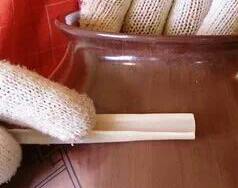
Piezas con engobes multicolores (Pieces with Multicolored Engobes)
Muchas veces, en este tipo de decoración con engobes, al bruñir la pieza, se pueden “borronear” los dibujos.
Ese defecto se evita agregando Cmc al engobe (50/50 de agua y sol de Cmc).
El Cmc también contribuye a que la pincelada “corra” mejor sobre la pieza.
*Nota: Solución de Cmc = 125 ml de agua + 2,5ml de Cmc
Many times, in this type of decoration with engobes, by burnishing the piece, you can “Smudge” the drawings.
This defect is avoided by adding cmc to the slipware (50/50 water and sun).
The CMC also contributes to “run” better on the piece.
- NOTE: Solution = 125 ml water + 2,5 ml of CMC
Loza blanca, 1000/1020°C. Engobes de Ni y de Mn
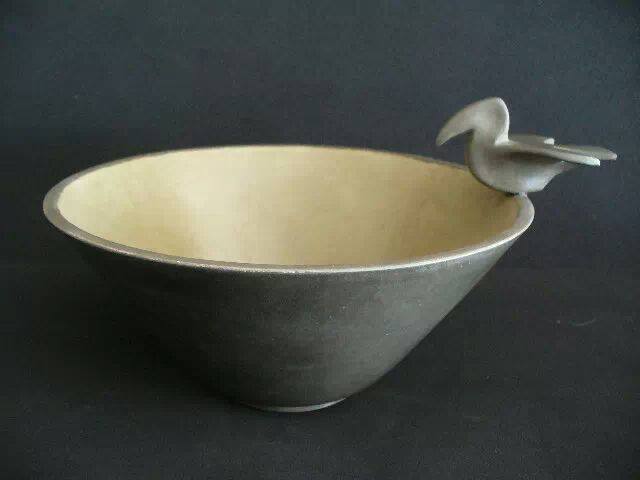
Loza blanca, 1020ºC. Engobe de Fe y Mn, champ-levé y esgrafiado.
White Loza, 1020º c. Slipware of faith and MN, Champ-Levé and sgraffito.
Gres, 1230°C. Engobe marrón claro esgrafiado y Ox de Cr aplicado a pincel dentro del esgrafiado.
Stoneware, 1230°C. Brown and ox of cr applied to brush within the sgraffito.
Loza blanca, 1040°C. Engobe azul de Co aplicado sobre otro verde de Ni con reserva de papel negativa.
WHITE LOZA, 1040°C. Blue of co applied on another green of ni with a negative paper reserve.
Loza blanca1030°C - Engobe azulino de Co/Cr/Ni, reserva de papel positiva y engobes negro y ocre salpicados con cepillo de dientes
Slipware bluish co / CR / ni, positive paper book and black engobes and ochre with toothbrush
Arcilla roja, 980°C. “Lechada” de engobe de fe y otro de Mn. Bruñido con cepillo de zapatos
Red clay, 980°C. “Grout” of of faith and another of MN. Burnished With Shoe Brush
Arcilla roja horneada en hornito de maceta con aserrín, aprox 750/800°C. Engobes de Fe, Mn, Ni y Cu
red clay baked in pot cookstove with sawdust, approx 750/800°C. Engobes of faith, MN, ni y cu
El mundo de los engobes es… grande y maravilloso. (The world of the engobes is… great and wonderful.)
De baja temperatura, de alta, de un sólo color, de muchos, esgrafiados, champ-levé, aplicados con pincel, cepillo de dientes, sopleteados, bruñidos, ahumados, con reservas, coloreados con óxidos, con pigmentos …
Y también bajo algún esmalte transparente, pero eso no lo hice nunca… por ahora.
~ Aclaración importante
los engobes son “a mi manera”, a lo que me interesaba y/o gustaba en esos años. Son los que se adaptaban a las condiciones en las cuales trabajaba: en el medio de una ciudad, sin balanza y en un taller ajeno en donde sólo se horneaba a 1000ºC (poca temperatura para esmalte comercial y mucha para los clásicos engobes bruñidos americanos). Para obtener como resultado final de horneada una excelente calidad de bruñido habría que hornear a no más de 950ºC, bajar sensiblemente la cantidad de esmalte transparente (o quizás eliminarlo del todo)… El uso del cmc, tal cual está explicado en algunas fotos de este mismo álbum, si bien ayuda en algunos puntos, conspira contra el brillo del bruñido. Los antiguos pobladores americanos usaban zumo de plantas como vehículo.
Low Temperature, high, of a single color, of many, scraped, Champ-Levé, applied with brush, Toothbrush, sopleteados, Burnished, smoked, with reservations, coloured with oxides, with pigments…
And also under some transparent enamel, but I never did that… for now.
~ important clarification
The Engobes are “my way”, what I was interested in and / or liked in those years. They are the ones that adapted to the conditions in which they worked: in the middle of a city, without balance and in an outside workshop where they were only 1000°C (low temperature for commercial enamel and a lot for the classical American Burnished. To Obtain as a final result of baking an excellent quality of burnished would have to bake no more than 950°C, significantly lower the quantity of transparent enamel (or perhaps eliminate it at all)… the use of the CMC, as it is Explained in some photos of this same album, while helping on some points, conspires against the brightness of the burnished. The Ancient American settlers used plant juice as a vehicle.
